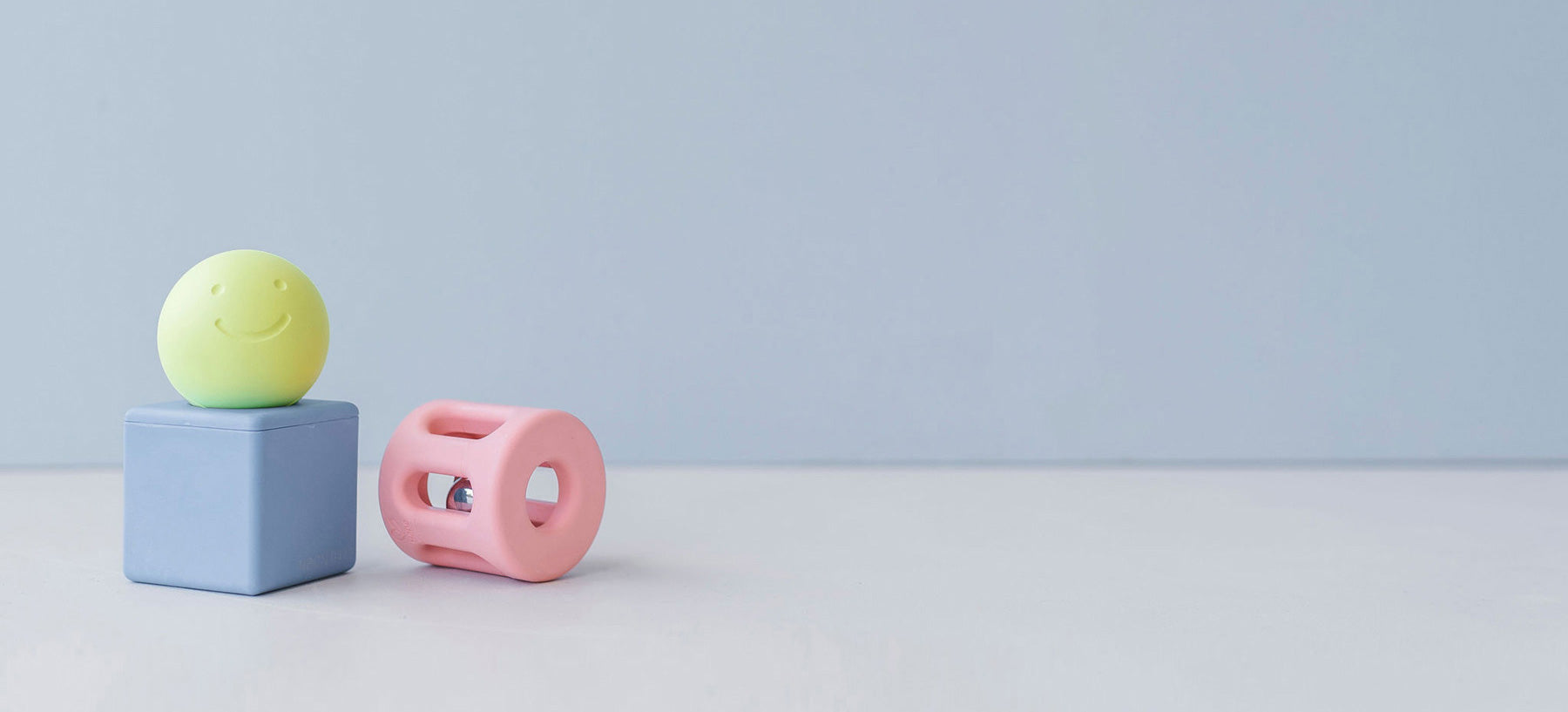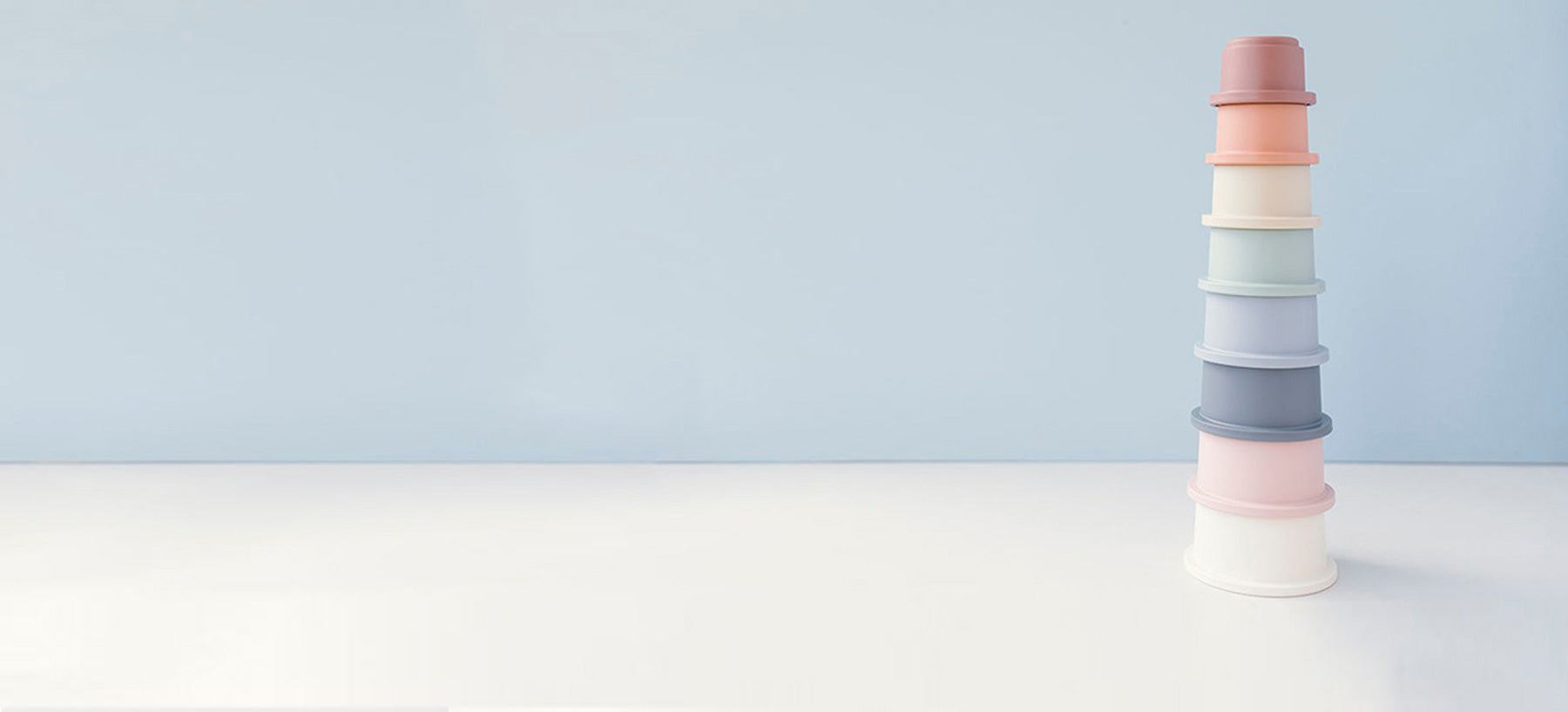What is gross motor development and what are the key developmental milestones?
Gross motor skills are those which require control of the large muscles of the body for tasks such as sitting, crawling, walking, and running. When thinking about gross motor skills, try and think of anything where the big muscles of your little one’s body must work together.

Gross motor skills and muscle control have a consistent developmental path. Babies first develop control over their head and neck muscles before getting control of their leg and feet muscles. They will first be able to move their arms in a coordinated way before they are able to move their hands and fingers in a coordinated way.
Gross motor skills develop as a reaction to the sensations our little one's experience and while they play. When a baby sees a toy that is just out of reach, their curiosity and inner drive to explore will motivate them to move towards the toy. To explore the toy, they will need to be able to use their hands, which means they will either need to be able to prop themselves up on their elbows to get their hands free if they are lying on their tummies, lift both hands up into the air to get the toy in front of their eyes if they are lying on their back, or be able to sit supported or independently without the help of their arms. In all three of these scenarios, babies' muscles need to work hard to enable them to do this. By working this way, their muscles are being strengthened and their endurance increases. This increase in gross motor abilities will allow them to play longer every time they try.

Bilateral integration is our ability to use both sides of our body in a coordinated way. When babies are born, they will work very hard to achieve symmetrical movements with both sides of their body, meaning that they will bring both hands to midline (which is that imaginary line down the length of our bodies) or lift both legs up to their tummies while lying on their backs.
After mastering symmetrical movements, babies will start working towards alternating or reciprocal bilateral integration movements. These movements are when a similar action is performed by both sides of the body, one after the other, for example, crawling. When this is achieved, the brain is learning how to control both sides of the body equally well and is starting to use each side of the body independent of the other.

What are the gross motor milestones?
In the first two years of life, your little one will be reaching all kinds of wonderful developmental milestones. It’s important to note that the development journey is not linear, it is a process that is unique to each and every little person. You might find that some babies take longer to go from one milestone to the next than others and that is perfectly fine. If your little one is actively working to get to those milestones and you can see steady progress, they will reach these milestones successfully.
Child development expert, Wendy Perera, has created a special milestone summary, just for PlayLogy. These summaries, which are included in each PlayBox, detail all the exciting developmental milestones to look out for and what they are working towards. This helps you to understand the best ways to play.
0-4 months:
- Babies will be able to push up on their arms while lying on their tummies
- Babies will be able to lift and hold their head up
- Babies will pivot, twist and rotate
4-8 months:
- Babies will pivot, twist and rotate
- Babies will begin to roll, crawl and sit
- Babies will find their feet
8-12 months:
- Babies will pull up to stand
- Babies will squat and bob up and down
- Babies will cruise and climb furniture or stairs
- Babies will stand independently or will be walking
1 - 2 years:
- Babies/toddlers will pull up to stand (if not walking already)
- Babies/toddlers will cruise and climb furniture or stairs
- Babies/toddlers will stand independently or will be walking
- Babies/toddlers will start running and jumping
Once babies develop the drive to explore their surroundings and toys, they will most likely use as many of their muscles as they can to try and reach or play with a toy. When we want to stimulate gross motor development, we need to think about how we can motivate babies to move whilst they play. Moving is learning after all!
We have worked with experts to curate our PlayBoxes. Each box comes with a PlayPack, with age and stage appropriate tips and tricks for how to encourage Gross motor skill development. 0-24 month PlayBoxes available here.

References
- Faure, M. and Richardson, A. - Baby Sense.
- Murkoff, H. and Mazel, S., 2018. What To Expect - The First Year [Rev Edition]. New York: Simon & Schuster, Limited.




